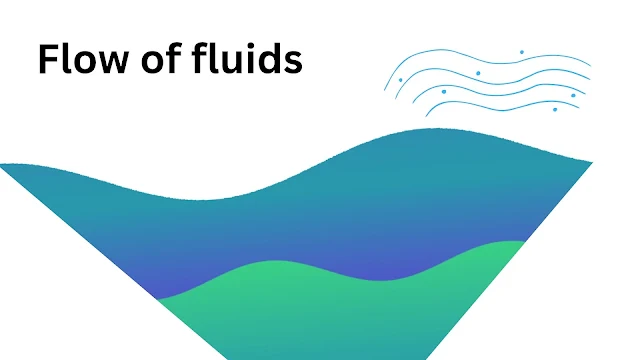The flow of fluids is defined as the movement of a substance from an area of high pressure to an area of low pressure in a continuous, uniform manner. Flow is one type of fluid dynamics and is studied in fluid mechanics.
Types of Flow of Fluids
The flow of fluids is of the following types.
{tocify} $title={Table of Contents}
(i) Steady and Unsteady flow
When the velocity of all the particles of the flowing liquid at a point remains the same and there is no relative change in the velocity of those particles with time, then this type of flow of liquid is called steady flow.
When the velocities of all the particles of the liquid have relative acceleration with time. Then this flow is called unsteady flow.
(ii) Laminar and Turbulent Flow
When all the particles of the liquid flow in the form of a strip on a straight parallel path and one strip moves sliding on the other strip. Under this type of flow, the speed of the fluid is very less, it is called laminar flow. If the speed of liquid increases in laminar flow, then the value of speed is obtained as follows. At which the flow is not laminar and the fluid becomes tortuous. And the turbulent flow begins, this type of flow is called turbulent flow.
The value of speed at which the flow changes from laminar to turbulent is called the critical velocity of the fluid.
(iii) Stream Line and Stream Tube
A stream tube is a tube of a small or large cross-section that is entirely boundary by streamlines. It may be of any convenient cross-sectional shape and no net flow occurs through the walls of the stream tube.
(iv) Compressible Flow
If there is a change in the volume of a liquid and its density under a flow, then this type of flow is called compressible flow, most gases are compressible. Therefore, the flow of gas in gas turbines and gas compresses is gas compressible.
(v) Incompressible Flow
If the volume of a fluid and its density do not change or are negligible under the flow, it is an incompressible flow.
(vi) Uniform Flow
If the average velocity remains the same at every cross-section in a given length under divergent flow as well as along the stream, then this type of flow is called uniform flow.
(vii) Non-Uniform Flow
If the cross-section of an open channel and the speed of the flowing fluid are different at different places, then the flow is called non-uniform flow.
(viii) Rotational Flow
If any fluid particles move at some angles at a point, then this flow is called rotational flow.
Applications of Flow Fluid
Flow fluid applications are used in many fields such as hydraulic systems, hydraulic engineering, and aerospace engineering.
It is used to measure the forces acting on the aircraft.
This is used to measure content flow levels, such as oil and other liquid from pipelines.
This may also be used in the flow of fluids engineering (traffic viewed as a continuous flow of liquids).

